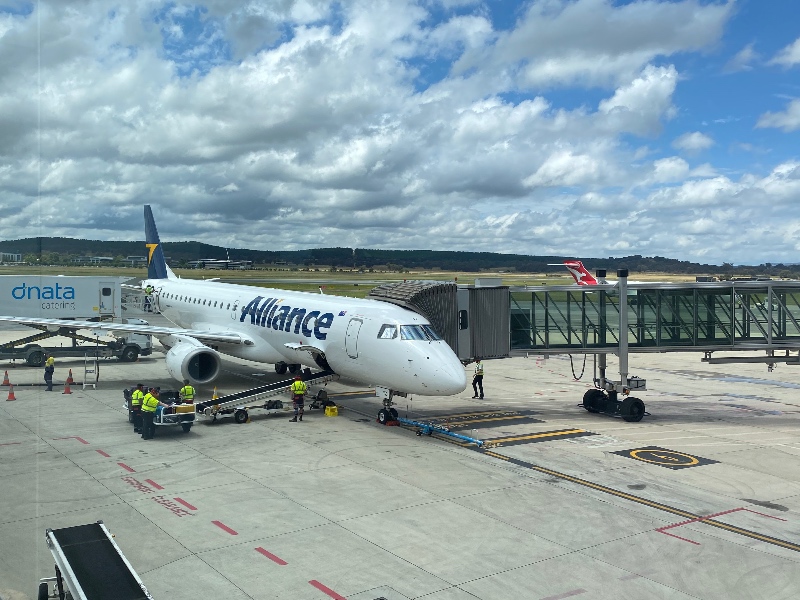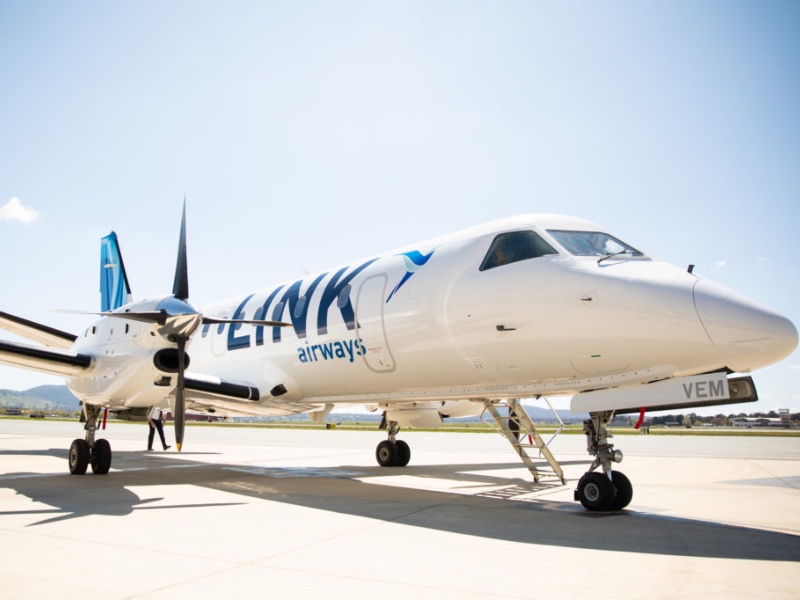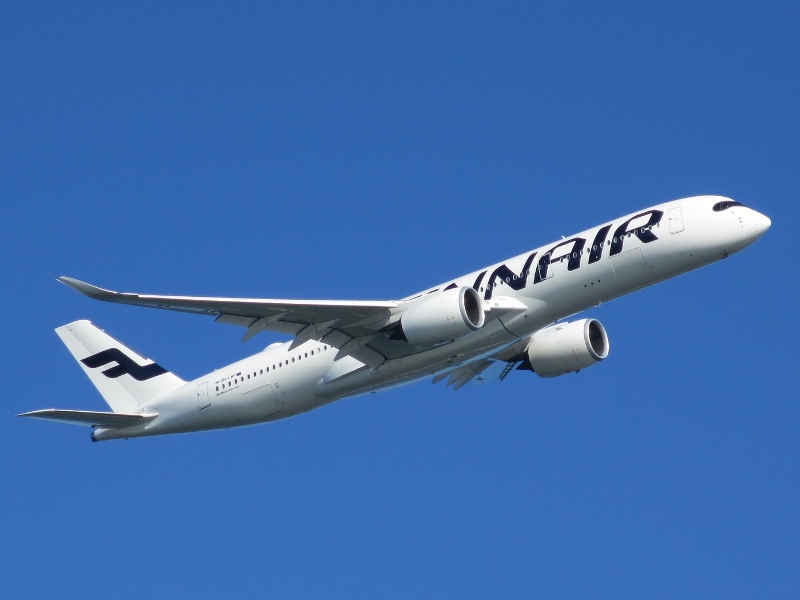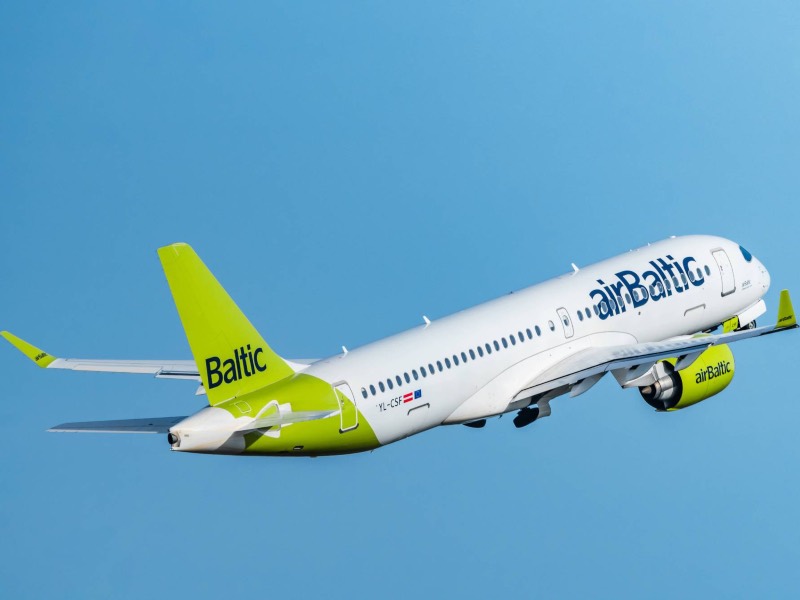Book One Airline, Fly Another: The World of Wet Leasing

Last year, Qantas signed a contract to “wet lease” up to 14 Embraer E190 jets from Alliance Airlines for a limited time. This has allowed Qantas to expand its regional network with the flexibility of a new aircraft type which can fly further than a Boeing 717 and has fewer seats than a Boeing 737 – without needing to buy any new planes.
Under this agreement, Qantas pays Alliance Airlines to operate its aircraft on behalf of Qantas. These flights have a “QF” number and passengers receive “Qantas” service on board, but the aircraft belong to Alliance Airlines and are flown by Alliance Airlines pilots and cabin crew. Most of these planes are also painted in Alliance Airlines colours, and Alliance is responsible for maintaining and insuring its Embraer fleet.
Alliance Airlines also provides wet leasing services to Virgin Australia on a small number of routes including Brisbane-Emerald and Brisbane-Mount Isa, which are marketed by Virgin Australia but flown by Fokker jets in Alliance colours. And since March, Link Airways has been operating Sydney-Canberra flights on behalf of Virgin Australia using Saab 340s.

These are all examples of wet lease arrangements, which are becoming increasingly common in the airline industry.
Why wet leasing?
Wet leasing is typically used by airlines when they are temporarily short on planes or don’t have a suitable aircraft type to operate a particular route.
For example, some airlines might wet lease extra planes for a few months during a peak period when there is a temporary spike in demand. This may also become necessary if an aircraft (or occasionally even a whole fleet of a particular aircraft type) needs to be taken out of service for an extended period for maintenance.
Under this arrangement, the lessee typically pays the lessor a fixed price per operating hour while the lessee collects the revenue from ticket sales. The lessee therefore bears most of the commercial risk.
There are many airlines that specialise in offering aircraft wet leases to carriers that need extra short-term capacity. Many are based in Europe, including Hi-Fly, Air Belgium, German Airways, Fly2Sky, Trade Air, Wamos Air and Avion Express Malta.
Ukraine’s SkyUp Airlines has also moved into wet leasing in order to utilise its fleet while Ukrainian airspace remains closed, and has been flying planes in recent months on behalf of Wizz Air and Air Moldova.
The other main type of aircraft leasing is “dry leasing”, where an airline leases an aircraft but provides its own crew, fuel, maintenance and insurance. Aircraft are also painted in the lessee airline’s own colours under this arrangement. Many planes around the world are dry leased out by large aircraft leasing companies, but as a passenger you likely wouldn’t notice that the plane wasn’t owned by the airline itself.
Well-known passenger airlines wet leasing to other airlines
Traditionally, wet leased aircraft have been operated by small charter airlines that specialise in this, and don’t actually sell passenger flights under their own brand. But recently, an increasing number of large, well-known passenger airlines have started operating flights on behalf of other passenger airlines.
For example, Finnair has been wet leasing narrow-body planes to British Airways during this year’s northern summer season. Finnair is also currently operating Airbus A350 flights on behalf of Eurowings Discover on trans-Atlantic routes including Frankfurt-Calgary, Frankfurt-Tampa and Munich-Las Vegas.

This arrangement makes perfect sense. British Airways has struggled to maintain its short-haul operations in recent months, while Eurowings Discover is a start-up airline with growth ambitions that outstretch its current available fleet. Meanwhile, Finnair has had excess aircraft and staffing capacity after having to cancel many flights due to the Russian and Ukrainian airspace issues.
Interestingly though, Iberia is also currently operating A321 flights on behalf of Finnair from Madrid and Barcelona to Helsinki.
Another airline whose operations have been affected by its geographic proximity to Russia, airBaltic, has also been wet leasing Airbus A220s to Eurowings Discover this year and will soon start doing the same for Swiss.

If you’re keen to try out Oman Air before it joins Oneworld, and want to earn or redeem Qantas or Velocity points doing so, Oman Air is currently wet leasing several Airbus A330s to Qatar Airways. These planes have been popping up on flights from Doha to Colombo, Dhaka, Tunis, Beirut and Khartoum.
Qatar Airways, which is currently short on aircraft, has also been using Cathay Pacific Boeing 777s (with First Class seating) on flights from Doha to Hong Kong and the Maldives. That’s surely a better use for those Cathay jets than having them parked in the Australian desert.
You can leave a comment or discuss this topic on the Australian Frequent Flyer forum.



Community Comments
Loading new replies...
Join the full discussion at the Australian Frequent Flyer →